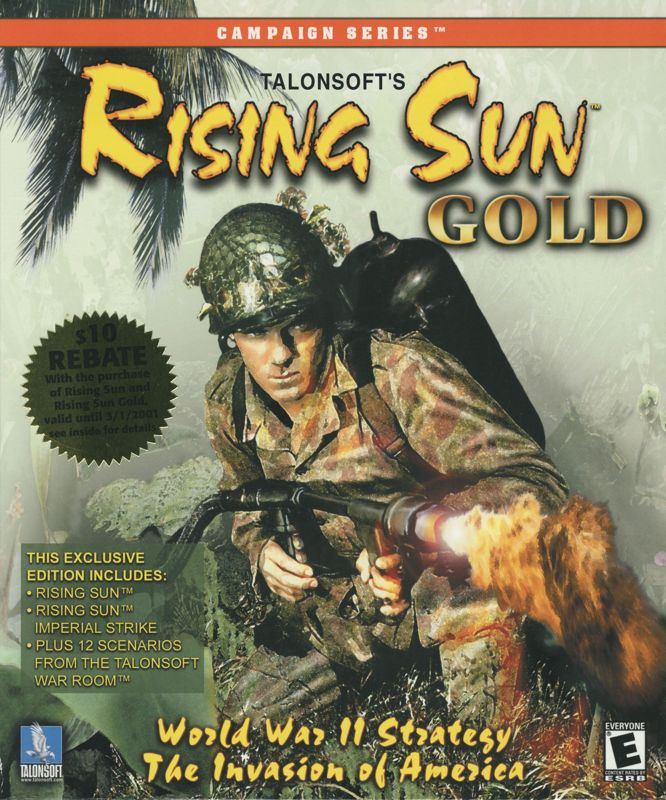Retro Replay Review
Gameplay
TalonSoft’s Rising Sun: Gold offers a deeply strategic, turn-based wargaming experience that faithfully recreates World War II naval and amphibious operations in the Pacific. The core Rising Sun engine combines hex-based movement with a straightforward yet nuanced combat resolution system, allowing both newcomers and veterans of the genre to find a satisfying level of tactical depth. Whether you’re executing carrier strikes, coordinating amphibious landings, or managing supply lines across vast ocean expanses, every decision carries weight.
The inclusion of the Imperial Strike expansion and twelve additional scenarios expands the range of strategic options dramatically. New units, specialized rules for night combat and air-to-ground support, plus variant supply mechanics keep the gameplay fresh and challenging. Each scenario highlights different aspects of Pacific warfare—from the desperate defense of Midway to the island-hopping campaigns in the Marianas—ensuring that no two battles feel alike.
One of Rising Sun: Gold’s greatest strengths is its scenario editor, which empowers players to craft custom theaters of conflict or tweak existing scenarios for increased difficulty. The careful balance between historical authenticity and player-driven creativity creates virtually limitless replayability. Multiplayer hotseat and play-by-email options further extend the lifespan of the title by allowing head-to-head competition in classic engagements.
Graphics
While Rising Sun: Gold was released in an era before high-definition war simulators, its visual presentation remains clear and serviceable. The hex-grid maps feature distinct terrain types—jungle, shorelines, coral atolls, and open ocean—each rendered with just enough aesthetic detail to convey tactical considerations at a glance. The color palette is intentionally muted, reflecting the grittiness of wartime operations without sacrificing readability.
Unit counters employ simple icons that indicate type, strength, and movement allowances. Though minimalist by modern standards, these representations excel in clarity during heated tactical exchanges. Animation is limited—units pop in and out of movement phases rather than trace elaborate paths—but the responsive UI and clear feedback for combat results (hits, retreads, retreats) keep the strategic flow unbroken.
The interface enhancements introduced in Imperial Strike, such as streamlined information panels and contextual tooltips, significantly improve the user experience. Detailed tooltip overlays reveal unit stats, support ranges, and heat-of-battle modifiers, helping players make informed decisions without sifting through multiple menus. For those willing to overlook polygonal fidelity, the functional graphics serve the gameplay exceptionally well.
Story
As a grand-strategy wargame, Rising Sun: Gold does not follow a linear narrative with characters or cutscenes. Instead, the “story” emerges organically from the clash of fleets, the ebb and flow of logistical lines, and the unfolding of historical what-ifs. Each scenario is prefaced with a concise historical briefing that situates the player within the broader Pacific campaign, recounting key events and strategic challenges faced by both American and Japanese commands.
The narrative drive in Rising Sun: Gold stems from player agency. Will you mount a daring carrier ambush at the Coral Sea? Can you repulse a Japanese amphibious assault on Guadalcanal? These emergent stories, fueled by your tactical choices and the fog of war, create a personalized historical odyssey. Victory feels earned when the tide of battle turns in your favor, and defeat carries the weight of genuine strategic missteps.
Expansion scenarios in Imperial Strike introduce “what-if” engagements that diverge from documented history—Japanese counterattacks in the Aleutians or hypothetical island seizures deep in Allied territory. Such speculative scenarios deepen the narrative potential by allowing players to rewrite Pacific history with bold, daring operations that never occurred. This blend of authentic and imaginative storytelling keeps the campaign compelling across dozens of playthroughs.
Overall Experience
Rising Sun: Gold stands as a testament to the enduring appeal of classic hex-and-counter wargames. The fusion of the original Rising Sun campaign, the Imperial Strike expansion, and twelve new scenarios delivers unparalleled breadth for aficionados of Pacific theater simulations. The game’s learning curve is moderate; a well-designed tutorial scenario and ample documentation ease newcomers into core mechanics, while veterans will appreciate the advanced supply rules and scenario editor for crafting ever tougher challenges.
The multiplayer options—hotseat, LAN, and play-by-email—turn each scenario into a competitive test of strategic wits, fostering a dedicated community of players who share custom scenarios and tactics guides. Even in single-player, the AI’s varied tendencies and randomized reinforcement schedules keep each replay unpredictable. Paired with the scenario editor, players can craft campaigns that span multiple engagements, tracking unit experience and supply attrition over weeks of play.
While the graphics may feel dated to some, Rising Sun: Gold’s commitment to historical detail, robust scenario variety, and user-driven creativity make it a must-have for serious wargamers. The package delivers exceptional value, combining two full campaigns plus a wealth of supplemental content. For anyone eager to test their strategic mettle in the Pacific War, TalonSoft’s Rising Sun: Gold remains a standout choice.
 Retro Replay Retro Replay gaming reviews, news, emulation, geek stuff and more!
Retro Replay Retro Replay gaming reviews, news, emulation, geek stuff and more!




Reviews
There are no reviews yet.